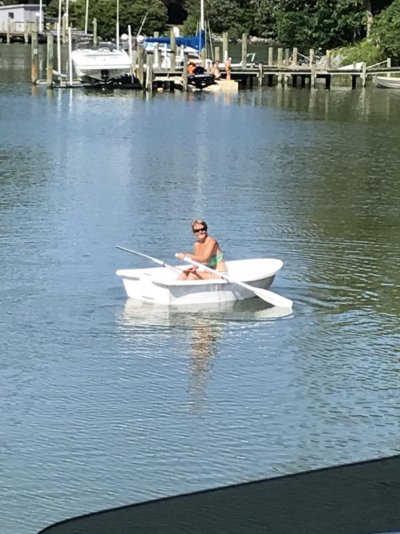boomerang
Guru
- Joined
- Apr 29, 2016
- Messages
- 1,446
- Location
- united states
- Vessel Name
- Wandering Star
- Vessel Make
- Hatteras 42 LRC
We're looking for information on a Honda 2 or 2.3 horsepower motor. The reason I ask is because we're more or less tied to our little 8' tender. Tender being the operative word. It's not real stable and rather weight sensitive which is why we're changing from a heavier Mercury 4 stroke (around 50 lbs) to a lighter one, probably the Honda which weighs about 20 lbs less @ 30. The little dinghy is small enough to tuck onto our transom using Weaver mounts and not hang over the sides nor tax the swim platform brackets with a lot of weight so we're keeping it if possible.
Our concern is the centrifugal clutch that Honda uses instead of a traditional F-N or F-N-R gear case. When just sightseeing, we like to putt-putt because we're not in a hurry most of the time anyway plus we like to keep the outboard noise factor down along with the RPM's. I read where the Honda centrifugal clutch doesn't engage until 2600 RPM. With our other motor, I'm guessing our RPM's were under 2000 a lot. So my question to any Honda owners is, has the clutch system been an issue or are you content with it?
I'm hoping someone on here has some experience with a small Honda to share.
Thanks
Shawn & Liz
Our concern is the centrifugal clutch that Honda uses instead of a traditional F-N or F-N-R gear case. When just sightseeing, we like to putt-putt because we're not in a hurry most of the time anyway plus we like to keep the outboard noise factor down along with the RPM's. I read where the Honda centrifugal clutch doesn't engage until 2600 RPM. With our other motor, I'm guessing our RPM's were under 2000 a lot. So my question to any Honda owners is, has the clutch system been an issue or are you content with it?
I'm hoping someone on here has some experience with a small Honda to share.
Thanks
Shawn & Liz




